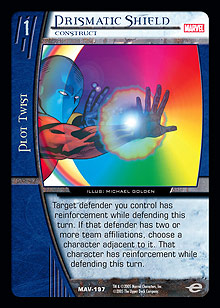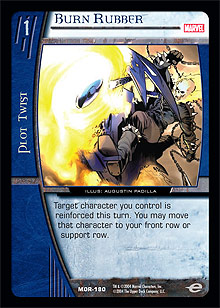
I consider myself a patriotic individual; I love Canada. Hockey, public health care, good schools, multiculturalism, and—of course—beer, all make me proud to call the Great White North my home. I enjoy living in Canada, but even I can’t argue the fact that the weather here is godforsaken a good portion of the time. It’s a problem that has existed since the founding of the nation. I mean, honestly, if you had to choose a place to settle, which variety of terra firma would seem best?
a) The sunny beaches of Florida
b) The rich soil of Virginia
c) Whatever the heck is under all that snow and ice
Pretty easy to tell which one shouldn’t be picked, eh? But still, someone chose C, and for hundreds of years since, Canadians have been trying to figure out who exactly that jerk was . . .
A Short Canadian History Lesson
Needless to say, it was difficult for both the British and French governments to find brave souls willing to foray into the uncharted wilderness. Though Canada was officially claimed by Britain in 1497, the nation’s first permanent settlers were French and didn’t arrive until 1604—an interim of 107 years. My guess is that it took that long to find people who disliked their limbs, ears, and facial features enough to want to freeze them off.
Seventy years later, the country had its fair share of grizzled hunters and adventurers. Canada had proven to be terribly profitable for a few lucky individuals, and the promise of vast fortunes sparked some hope in certain groups of traders—mostly hat makers, furriers, and the dimwitted. Unfortunately, very few women had been foolhardy enough to undertake the long journey into desolation, and the population was consequently at risk of extinction. As a remedy, the French bribed almost 800 women to immigrate. Called La Filles du Roi (The Girls of the King), they were given a dowry, clothes, and in many cases, exemption from legal charges in return for their relocation.
That’s right—though Canada was rich with natural resources and potential, not even criminals would go there without being bribed.*
And thus I arrive at my point, which is, oddly enough, The Avengers—the set that offers players a bribe to play Team-Up decks!
Team-Ups
Since you may have missed your Sneak Preview, I’ll run down the relevant points. Just as Green Lantern Corps introduced a new version name for plot twists and equipment in its Construct cards, The Avengers offers the Team-Up version name; plot twists that allow characters to share team affiliations can now be identified as a group. Codifying the term in this way gives players more reasons to run Team-Up decks. Players can now search out Team-Ups, protect them from destruction, or garner other benefits from playing them.
Looking at the set, you can see examples of search cards, like Beast, Furry Blue Scientist and Beetle ◊ Mach I, as well as cards that protect Team-Ups like Fox Fire. However, The Avengers provides subtler cards for Team-Up decks, and one of the best is today’s subject: Prismatic Shield.
 The Shield is a 1-cost plot twist that reinforces a defender you control. Then, if that defender has two or more team affiliations, an adjacent character of your choice gains reinforcement while defending this turn (regardless of its affiliations).
The Shield is a 1-cost plot twist that reinforces a defender you control. Then, if that defender has two or more team affiliations, an adjacent character of your choice gains reinforcement while defending this turn (regardless of its affiliations).
This is good news for Team-Up decks. While Burn Rubber and Catcher’s Mitt both offer reinforcement and have their own merits, neither can reinforce two characters. Prismatic Shield gives Team-Up decks the edge over others in a very fundamental regard, since reinforcement effects frequently save or win games.
Just flipping Prismatic Shield can save you from taking a big hit, but the interesting part is the difficult question you can often pose to an opponent with its second effect. Unlike Burn Rubber, Prismatic Shield must target a defender, so you can’t reinforce the target in advance. However, assuming you have enough characters on the board, you can make an opponent choose between stunning a very important one that is preemptively reinforced or a less important one that will allow for breakthrough. It’s not a trick that will come up in every match. In most games Prismatic Shield will just save you from a lot of damage—but that’s not a bad thing, is it?
There are some neat synergies that make Prismatic Shield more interesting than you might suspect. It works well with Lacuna and Moonglow; not only can both search out team-up cards, but they also take on team affiliations of characters around them. In addition, their low costs make them likely candidates for attacks that might cause breakthrough, which makes them more attractive targets for Prismatic Shield.
Also of synergistic note are a select handful of Leader characters. Every new team in The Avengers other than Kang Council has a leader that gives its team affiliation to adjacent characters (Captain America, Steve Rogers and Egghead, to name a couple). If you’re using this effect to give an adjacent character an extra affiliation, then any character receiving that affiliation automatically becomes a candidate for Shielding.
 Overall, the difference Prismatic Shield makes isn’t just increased defense—it’s a difference of speed. While a Team-Up deck can often reinforce the old-fashioned way, being able to do so via an effect can preserve your ability to swing back on turns when you don’t control the initiative. This is one place where Prismatic Shield is infinitely better than Burn Rubber—under the right circumstances, you’re saving yourself from having to exhaust two characters that can then potentially attack back.
Overall, the difference Prismatic Shield makes isn’t just increased defense—it’s a difference of speed. While a Team-Up deck can often reinforce the old-fashioned way, being able to do so via an effect can preserve your ability to swing back on turns when you don’t control the initiative. This is one place where Prismatic Shield is infinitely better than Burn Rubber—under the right circumstances, you’re saving yourself from having to exhaust two characters that can then potentially attack back.
The group of leaders I mentioned a moment ago all aid adjacent characters in combat— most leaders do, in fact. Again, this helps your ability to swing back when you don’t control the initiative. How? Well, if the leader stays face up thanks to a defensive pump or something similar, adjacent characters are going to be fiercer in combat. While there’s no way to deter the opponent from attacking the leader, a preemptive reinforcement can make any of the adjacent characters pretty undesirable to attack. That translates to enhanced offensive potential once you get to your own combat.
In the immediate metagame, this card could be used in any deck that combines teams and diversifies its drops. While GLEE would likely prefer Catcher’s Mitt, Prismatic Shield can work wonders in Brave and the Bold. B and B lives off aggression, and Prismatic Shield can make sure that the hurt keeps coming at a relentless pace without permitting massive breakthrough.
Looking ahead, this card will be useful in any deck featuring the affiliation-sharing leaders. Depending on the intent of your deck, you might not even need to team up until turn 6, so running Hyperion, Mark Milton or Helmut Zemo ◊ Citizen V, Warmonger instead of a Team-Up plot twist can be viable. Prismatic Shield would then substitute as your source of late-game reinforcement. A variety of Team-Up decks that might arise can also use the card, and deck choices previously limited by their lack of aggression in Constructed could become viable—a Golden Age Honor Among Thieves comes to mind.
The only thing really hurting Prismatic Shield is its vulnerability to Not So Fast, but the loss of Overload has removed most copies of the card from metagames around the globe. All in all, it’s one thread in the tapestry of incentive offered in The Avengers to those who would try new decks. While the Shield itself won’t exactly make you do a double take, it’s a useful part of a larger suite of Team-Up support. The Avengers is set to shake up the environment, and Team-Up decks will be a big part of the shift. If you’re building one, give this underrated card some serious thought.
—Jason “Igloo” Grabher-Meyer
*In your face, Australia!
**And for those of you who didn’t get this article’s title, “The Canadian Shield” is a large span of granite bedrock that reaches across vast parts of the country, hence tying the entire article together. Ye know . . . if ya squint and pretend.